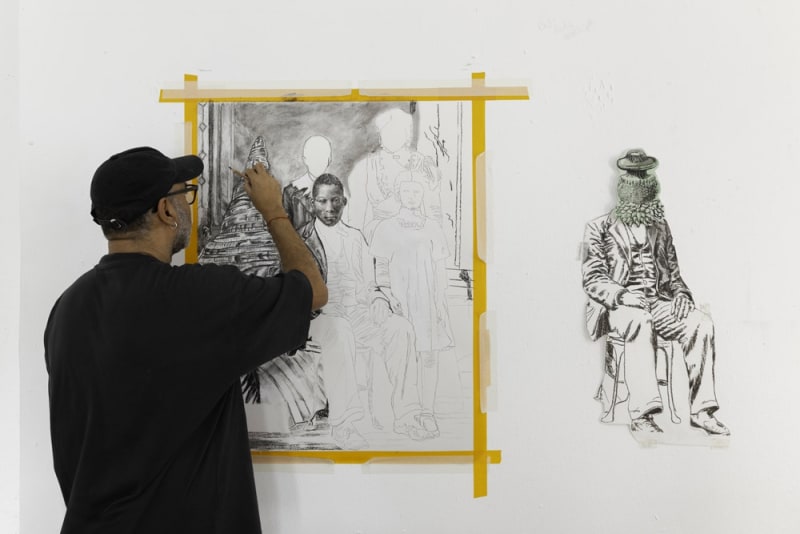His drawings and collages had caught our attention at Arco Lisbonne. We find the Afro-Brazilian artist in his studio for a meeting under the sign of memory and aesthetic rigor.
He is an artist of great sensitivity that we find at Jardin Rouge in Marrakech, after his first month of residence. His workshop is like his work haunted by the colonial past: minimalist and refined. Archival images representing members of his family are mixed with some sketches and encyclopedic works that have shaped his relationship to the world. "I still feel the absence of my ancestors," he tells us with emotion, evoking a most rigorous childhood."Taching up at the end of the military dictatorship in Brazil and being myself the son of a soldier, I received, in this context, an oppressive education. It was in the world of books, comics, botany textbooks and encyclopedias that my mind then found tranquility. "
Cássio Markowski, who belatedly became aware of what linked him to this still buried history of colonization and slavery, defines his plastic approach as a process mixing both history, imagination and autobiography. "I work a lot from my personal and historical memory, in a way of thinking that is similar to collage. Although not directly using found images, but rather the drawings of these images, I try from my work to draw attention to the issue of erasure. Also influenced by the writings of the Brazilian poet Oswald de Andrade, author in 1928 of an Anthropophagous Manifesto, the artist does not hesitate to inscribe his approach in a double dialectic consisting of "consuming" images that he first pre-selected in books in order to "vomit" them during the creative process.
The drawings to which he gives life during his residence, made from a mixture of gouache, charcoal and coal, are inspired by archival images and portraits from which he always symbolically erases some parts of the body."There persists a historical erasure of the characters of the black diaspora," he acknowledges, mainly from a Euro-centered point of view. "Withous not to subvert a historical reality whose writing still remains fragile, the artist accompanies his compositions with drawings in relief hung by simple pins, the use of which is reminiscent of an entomologist's concern for scientific precision. In search of an intimate memory buried in the limbo of History and a painful collective history, Markowski's work strikes both by the rigor of his line and an imagination that evokes South American fantastic realism, of which he reminds us that it was first "a form of resistance to oppressive powers".


